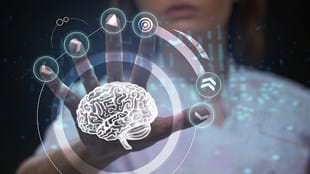Depictions of the future often involve highly evolved medical systems that can diagnose and treat human ailments with a simple scan and non-invasive procedure.
But that’s science fiction, right? Well, maybe not for long. A medical device inspired by Star Trek and powered by artificial intelligence can now test for 13 different medical conditions without a doctor in sight.
Basil Harris is an accident and emergency doctor who designed the DxtER – a diagnosis machine that's won an international competition organized by the X Prize Foundation and worth millions of dollars. You can hear him explain the device here:
Harris admits the DxtER is still more a demonstration project than a proven technology. But it is built to detect a range of acute illnesses, chronic diseases, multiple body systems and infectious diseases, and it certainly works. A patient’s metabolic signals and vital signs can all be measured, recorded and analyzed.
“It’s basically a medical kit and a system that a user will interact with,” he says. “The user need not have any medical background whatsoever. They interact with a tablet computer, it guides them in putting the sensors on, and then you get all the objective data that you can.”
Such new technology raises a host of questions, from availability to regulation and whether it might be used to undercut traditional funding models. How to apply conventional medical laws to an AI machine will be quite a challenge.
“It’s going to have to prove itself to be adopted into the medical community,” says Harris. “The autonomous unit is not what will come out to begin with.”
However, he says, there is real potential to apply DxtER in combination with normal medical practice, and it could be particularly useful for communities and individuals without good access to health care.
"An inevitable revolution in healthcare is coming,” he says. “In this revolution, the consumers are the drivers and technology is the equalizer"
So what exactly is DxtER?
- DxtER is artificial intelligence-based technology designed to diagnose medical conditions.
- Created by two brothers, an emergency medicine physician and a network engineer, the technology integrates insights from clinical emergency medicine with the data analysis of patients.
- Users attach the sensors to their body and the sensors collect data on vital signs, body chemistry and biological functions.
- The device’s diagnostic engine analyzes the data and presents a medical assessment on a tablet screen.
This content is published under licence and in partnership with Radio New Zealand, one of the world’s foremost public broadcasters. To learn more go to radionz.co.nz
If you want more health and fitness inspiration simply sign up to Fit Planet and get the freshest insights and advice straight to your inbox.








